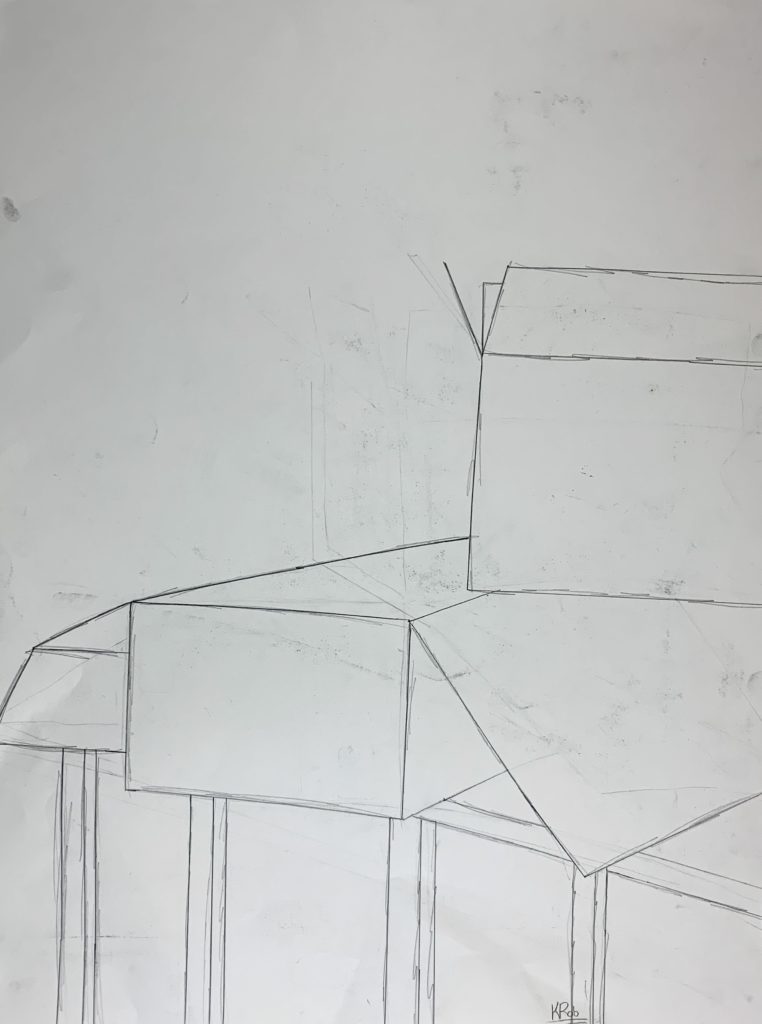
Outlines
This is a drawing of 2 boxes and ladder.

This is a drawing of 2 boxes and ladder.

This drawing is the contrast between negative and positive shapes using dark shading versus the white background.
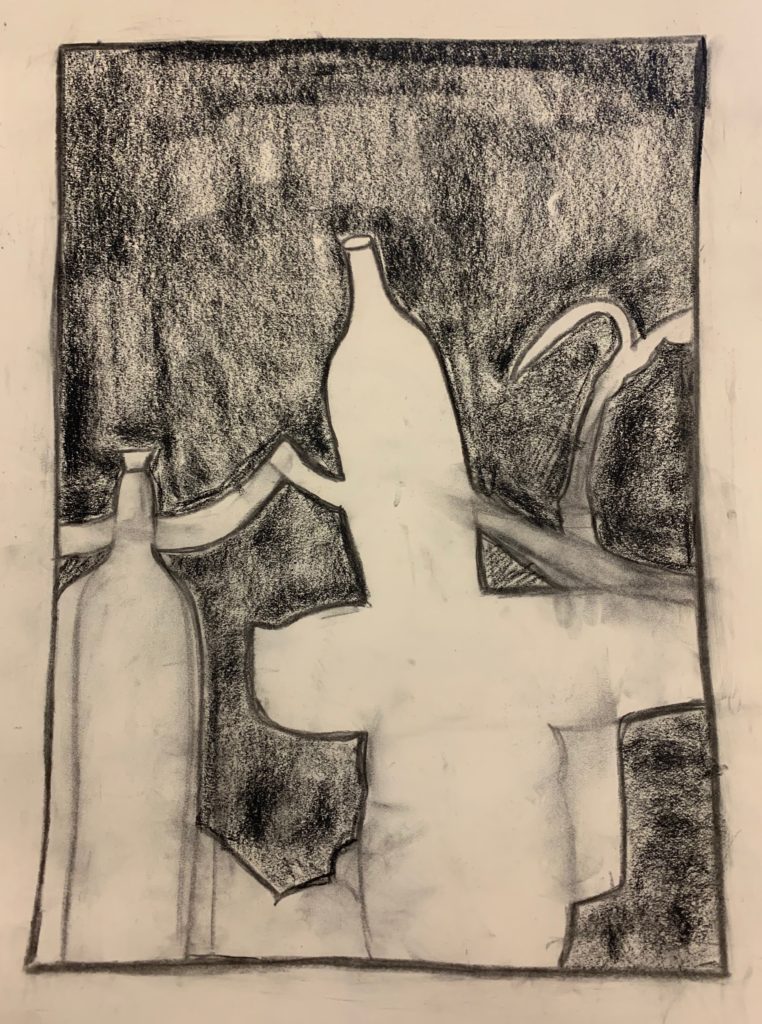
These are basic outlines of objects using cylinders, spheres, and square shapes.
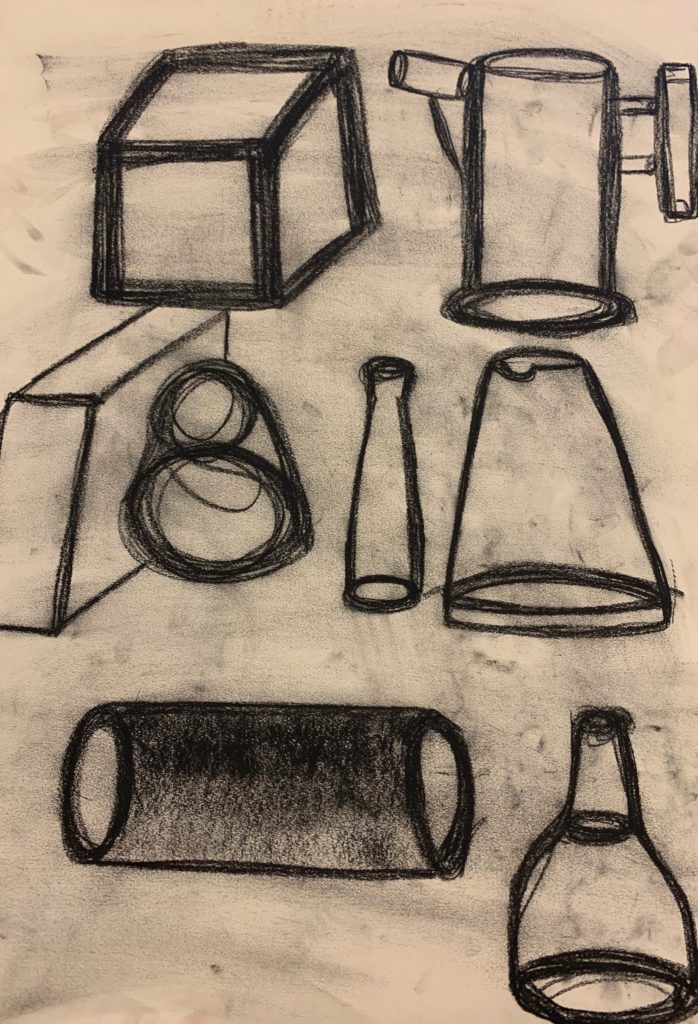
The first artwork is a portrait of Kristen using value shading. The second artwork is a portrait of Mason using basic drawing and light detail.
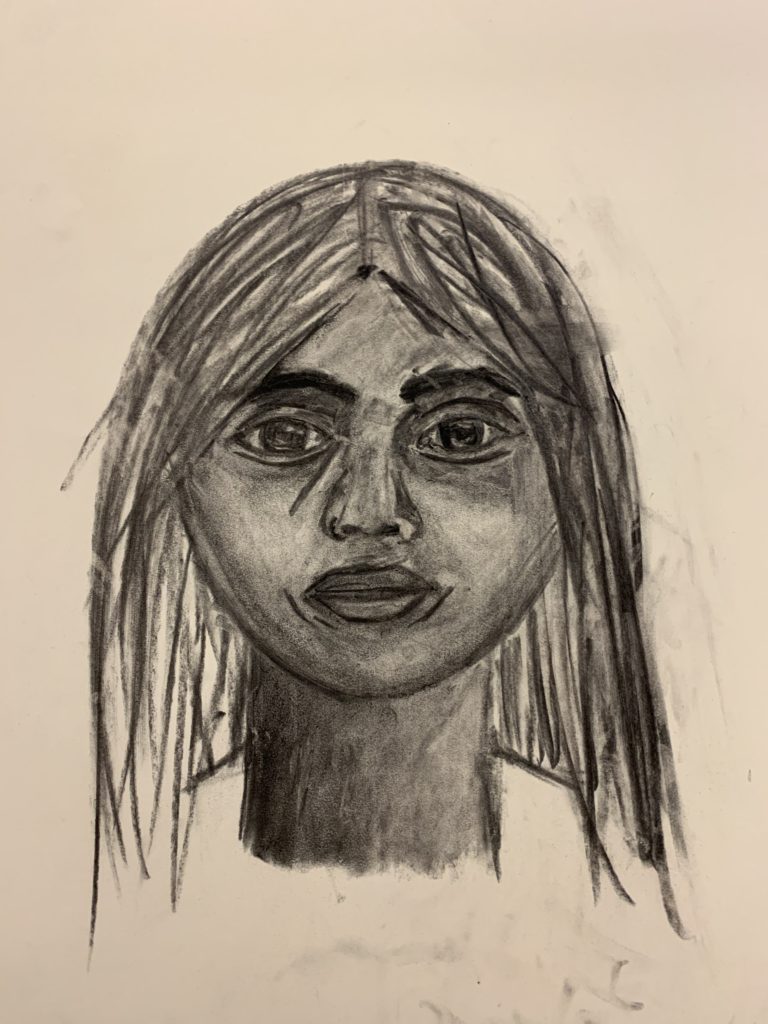
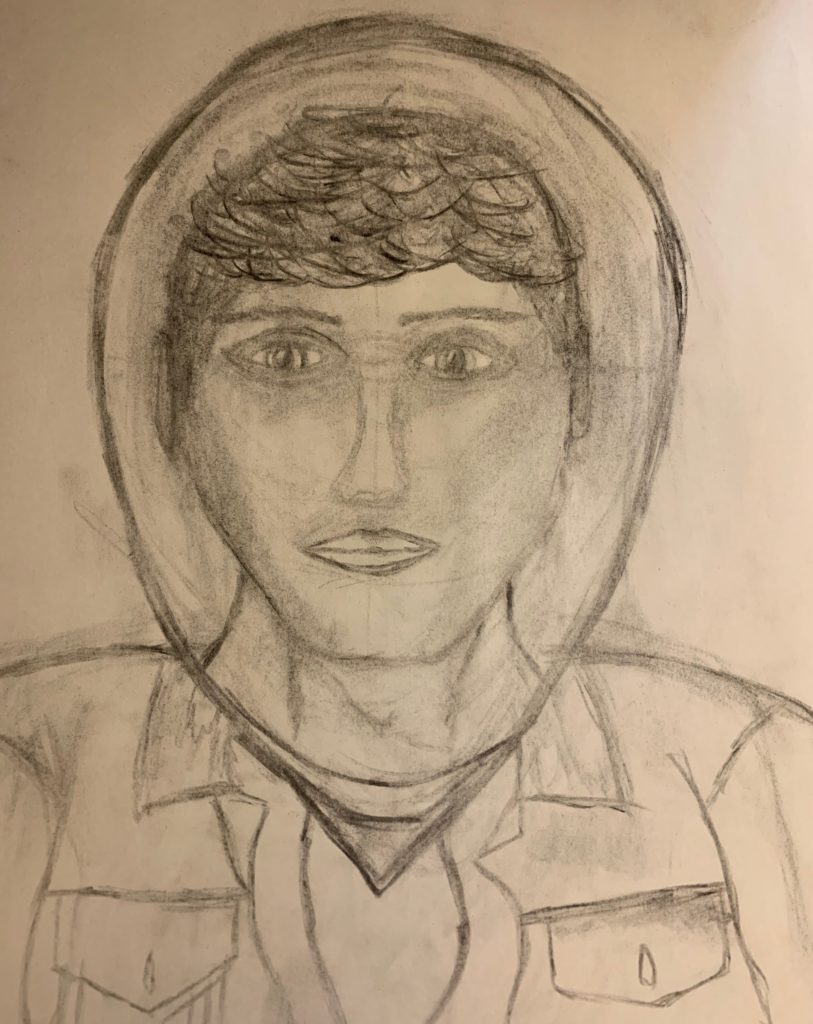
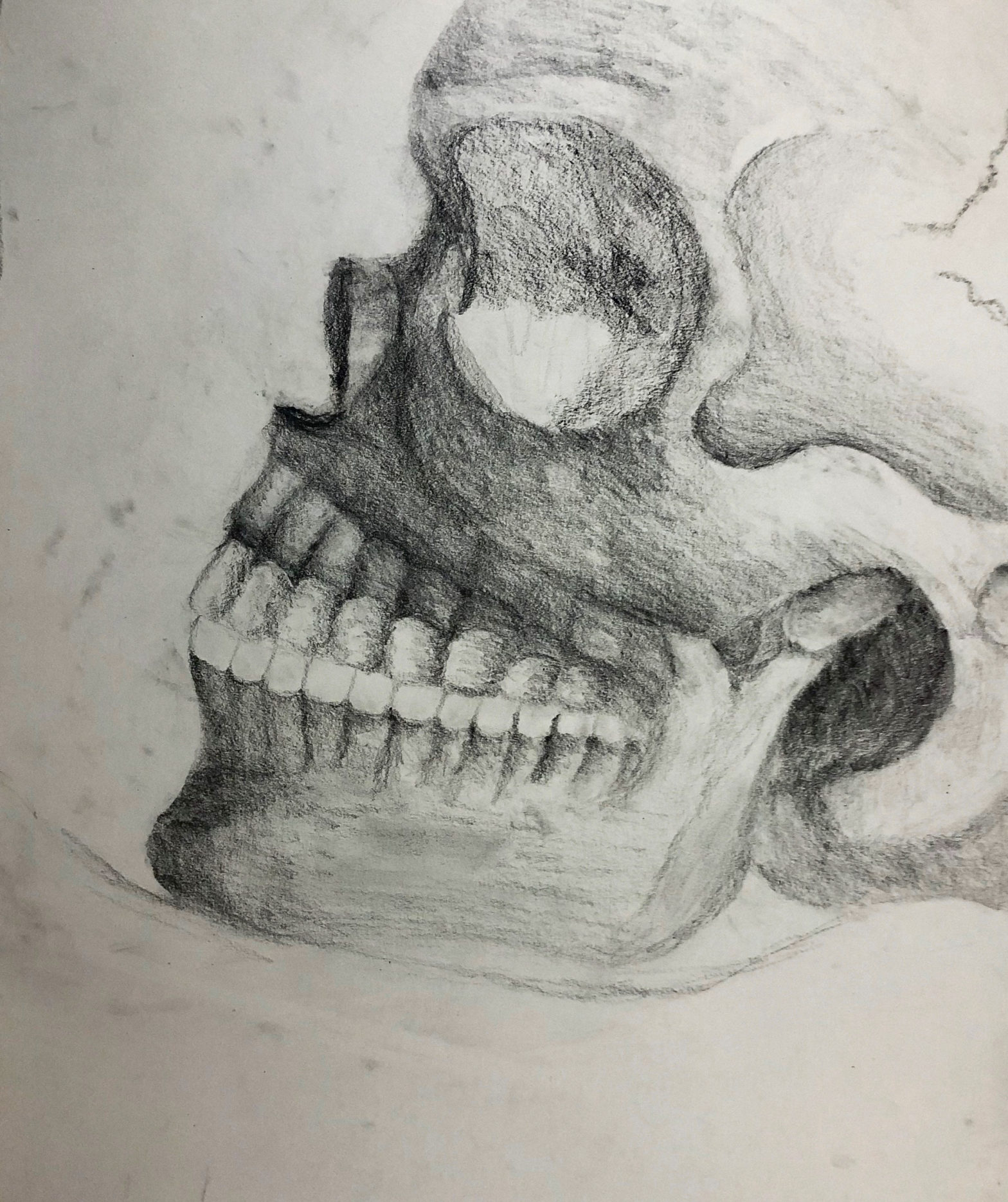
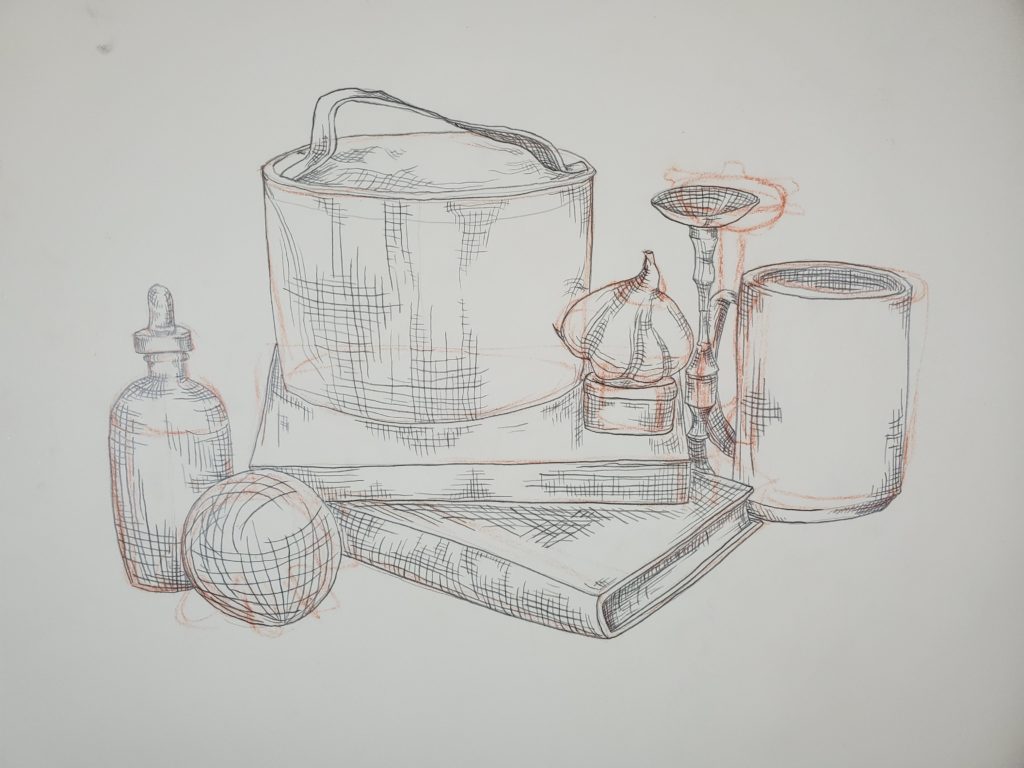
I drew this still life of various objects from my room by first sketching out basic forms. I drew the objects on top of these basic forms and corrected them as I saw appropriate, using sighting and measuring techniques. Finally, as I decided that the forms were correct, I added cross-hatching to add dimension and inform the shape of the objects. I used vine charcoal and conte crayon for the basic shape and form of the objects, and finalized them with a graphite pencil.
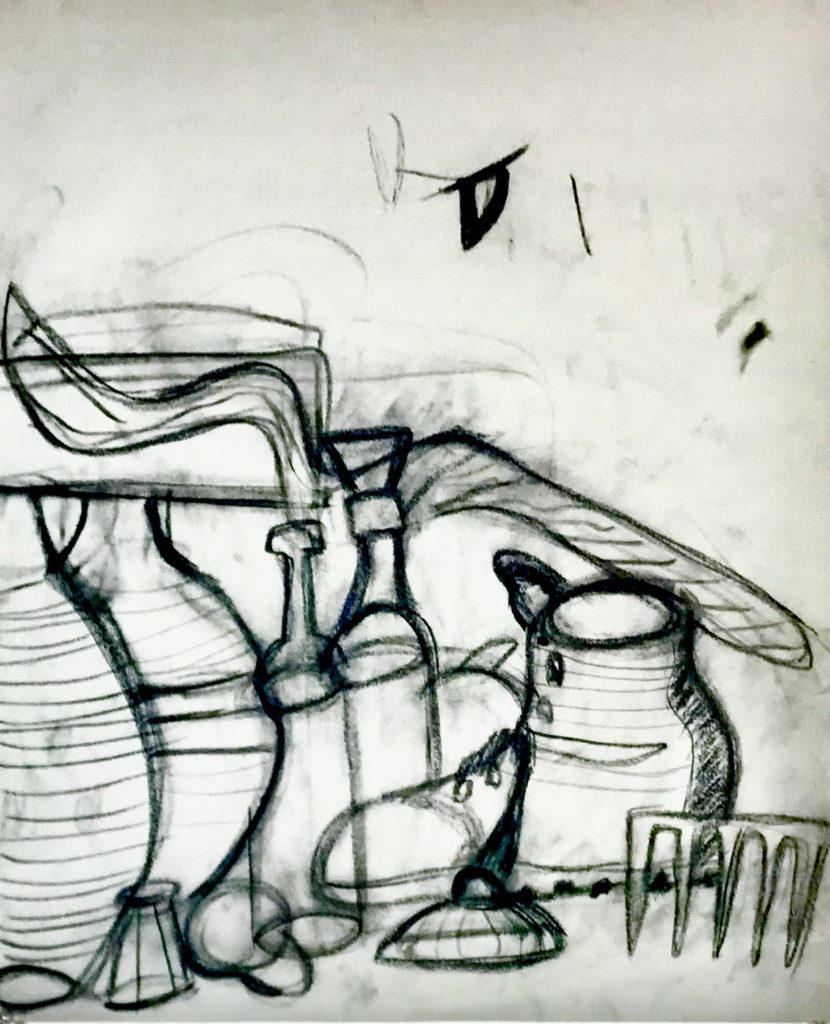
This drawing was a still life that I drew during class. It is a drawing with charcoal and keeps proportion in mind as I made sure the sizes of each object were on point with one another. Basic shapes were used quite a bit especially on the bottles and the boot.
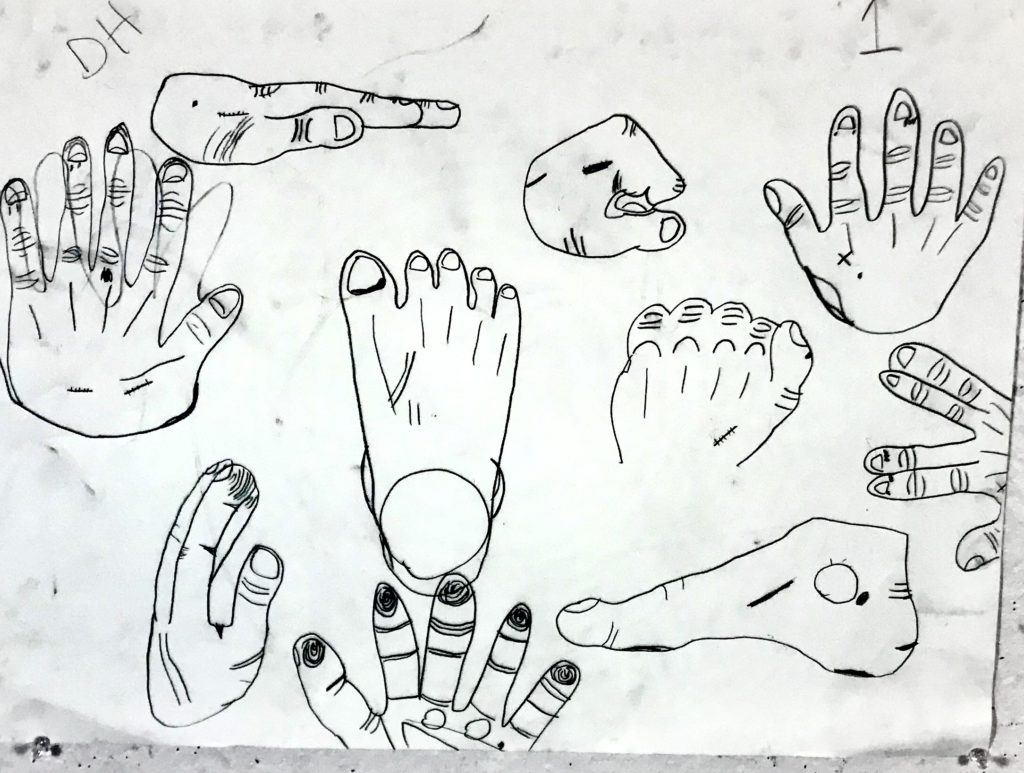
This artwork is not a still life but rather pictures of hands and feet most of which mine that I have drawn. I covered the details in my hands ranging from any cuts, scars or knuckles all the way to simple wrinkles and even fingerprints in some cases. In each drawing on a hand or foot I made sure they are always in different positions when drawn so it doesn’t get repetitive.

These three pictures of my lunchbox are some of the best contours and cross hatching I’ve done for class so far.
For the contour drawing in the top left corner, I began by drawing the lunchbox without lifting my pencil. I don’t remember using any under drawings for this one. For the other two, however, I believe I did begin by drawing two rectangular prisms stacked on top of one another.
The cross contour drawing was the most difficult for me because it was hard to visualize the dips and rises in the fabric on a grid. If I were to draw this over again, I might spend a bit more time on the cross contour to make sure I have the topography correct.

I used vine charcoal to draw this picture and started by creating margins on my paper and marking the halfway and quarter way points along the edges. I used these marks to match up my drawing with what I saw using my viewfinder.
I began by mapping out and correcting the general shapes and positions of the objects with several gesture drawings, then I filled in the values of the positive space before moving on to the negative space and background.
It took me a while to draw this picture, although there are still details I missed; for example, the glass bottles had ridges on the top just below the neck that refracted the background image in interesting ways. Given more time, I would include more details like this.